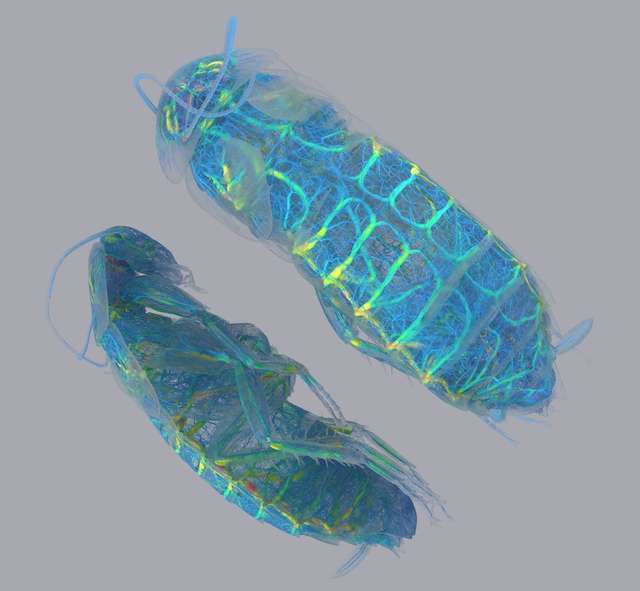Propagation-based phase contrast
Phase-contrast X-ray imaging
Phase-contrast X-ray imaging or phase-sensitive X-ray imaging is a general term for different technical methods that use information concerning changes in the phase of an X-ray beam that passes through an object in order to create its images. Standard X-ray imaging techniques like radiography or computed tomography (CT) rely on a decrease of the X-ray beam's intensity (attenuation) when traversing the sample, which can be measured directly with the assistance of an X-ray detector. However, in phase contrast X-ray imaging, the beam's phase shift caused by the sample is not measured directly, but is transformed into variations in intensity, which then can be recorded by the detector.In addition to producing projection images, phase contrast X-ray imaging, like conventional transmission, can be combined with tomographic techniques to obtain the 3D distribution of the real part of the refractive index of the sample. When applied to samples that consist of atoms with low atomic number Z, phase contrast X-ray imaging is more sensitive to density variations in the sample than conventional transmission-based X-ray imaging. This leads to images with improved soft tissue contrast.In the last several years, a variety of phase-contrast X-ray imaging techniques have been developed, all of which are based on the observation of interference patterns between diffracted and undiffracted waves. The most common techniques are crystal interferometry, propagation-based imaging, analyzer-based imaging, edge-illumination and grating-based imaging (see below).
Read more about 'Phase-contrast X-ray imaging' at: WikipediaWikipedia contributors. "Phase-contrast X-ray imaging." Wikipedia, The Free Encyclopedia. Wikipedia, The Free Encyclopedia, Feb. 19, 2024.
